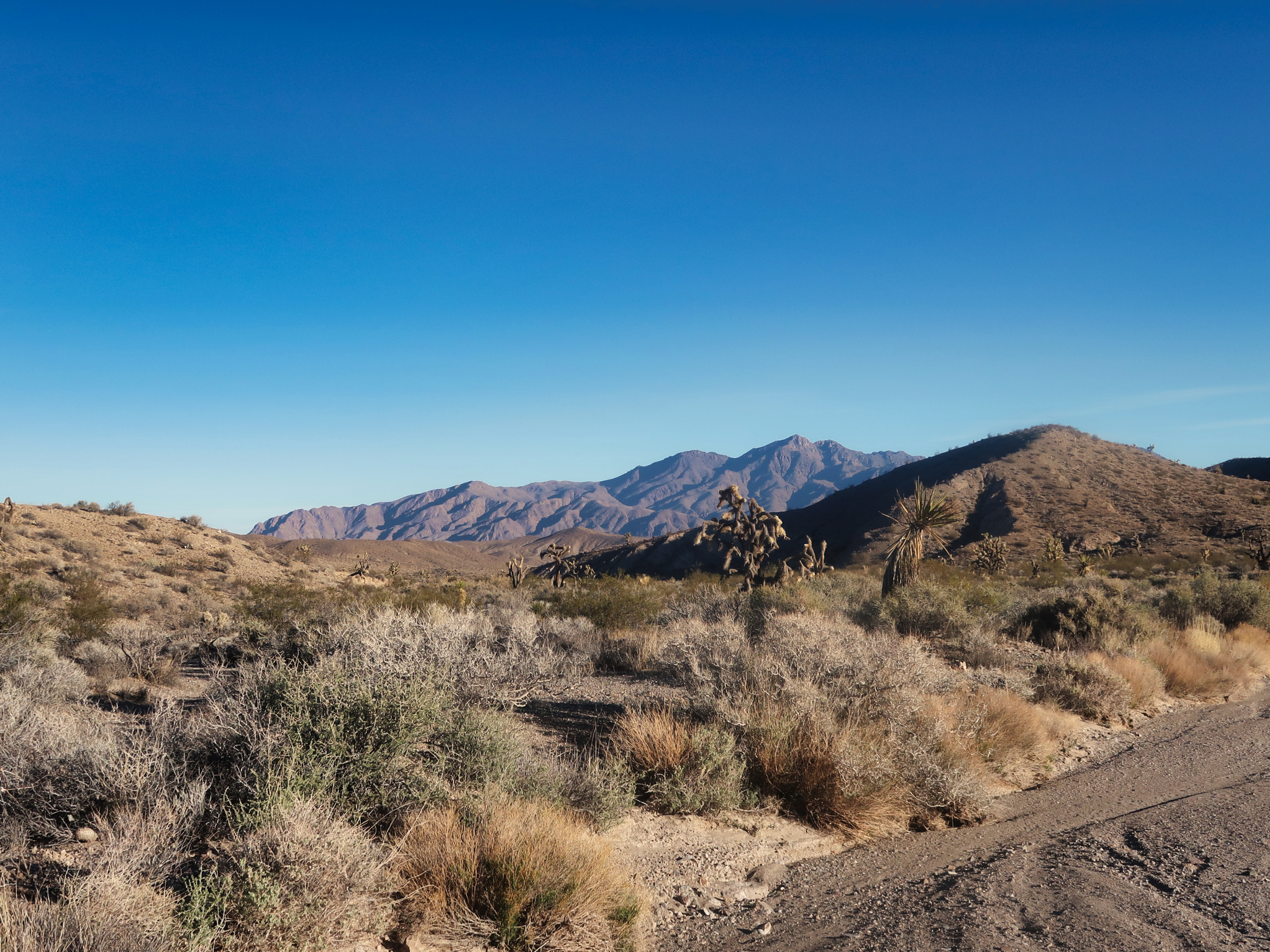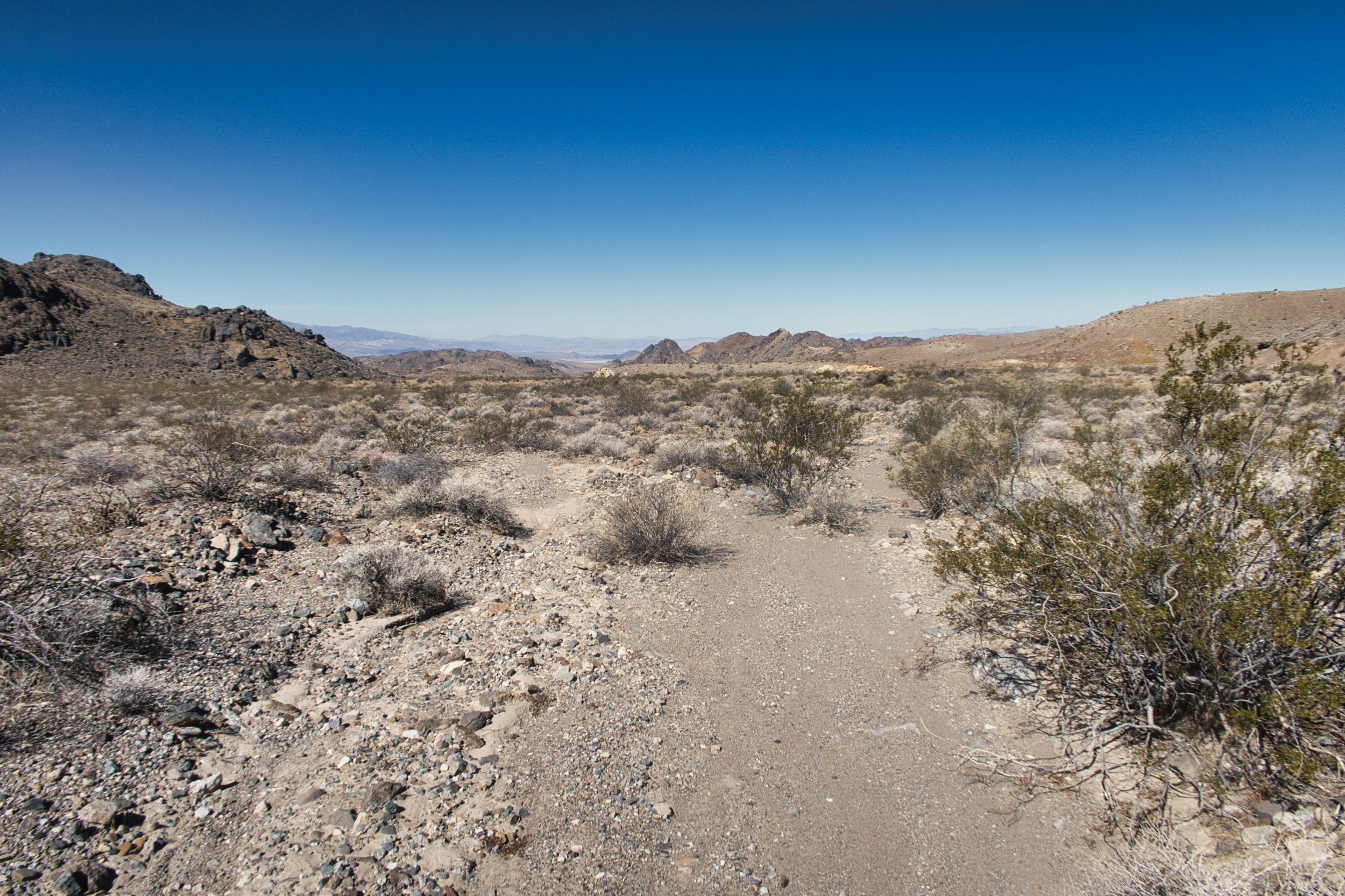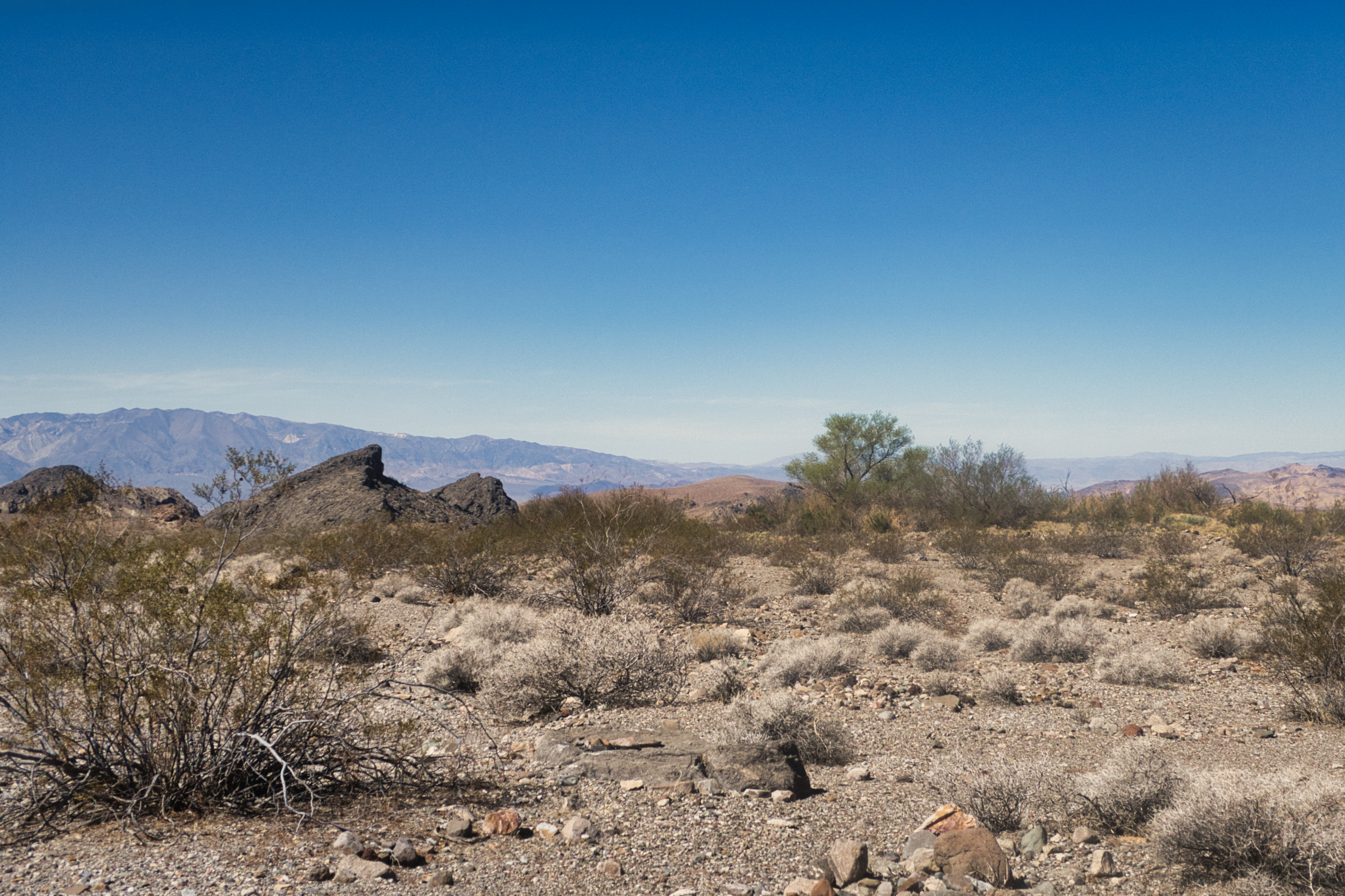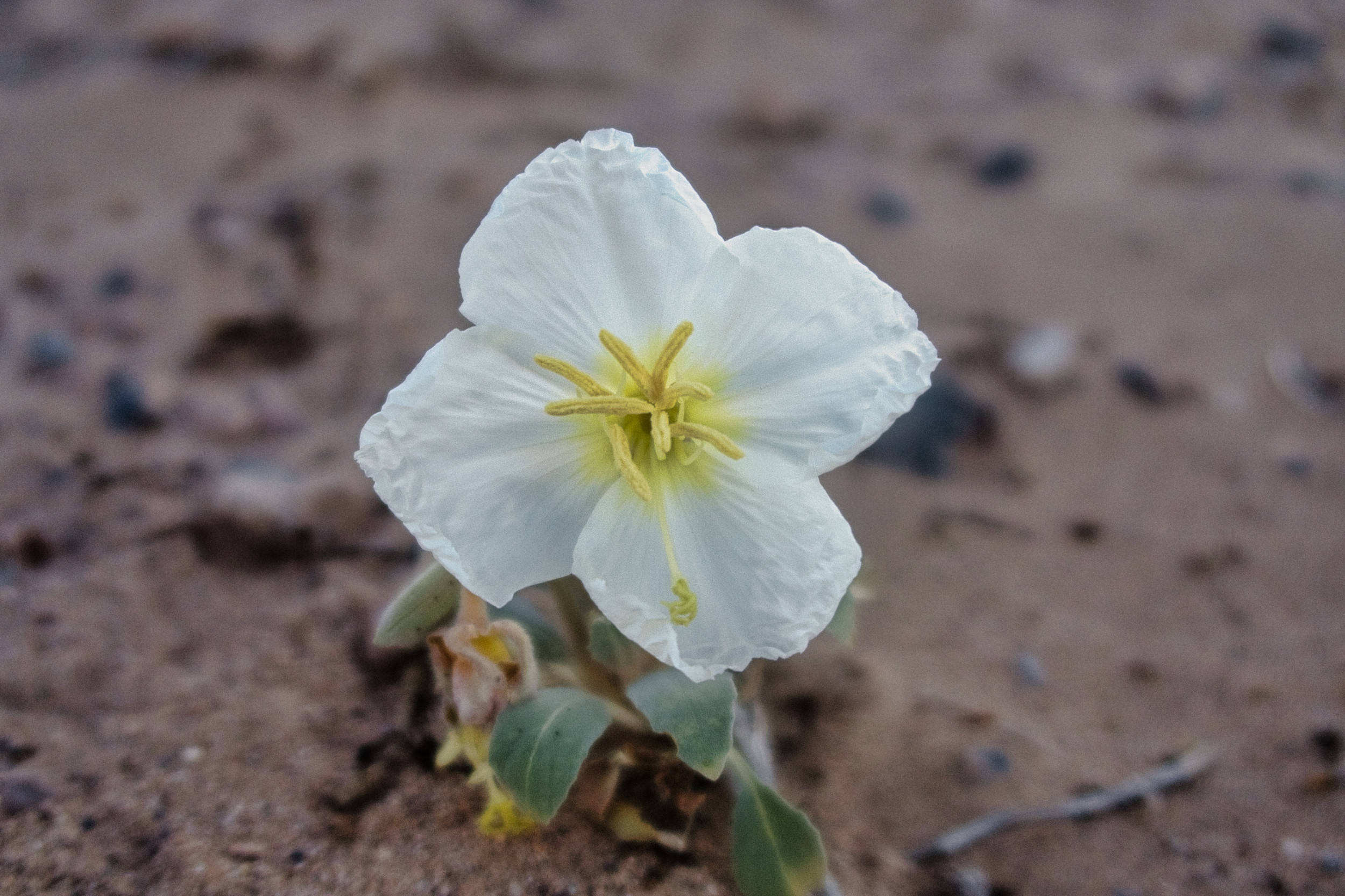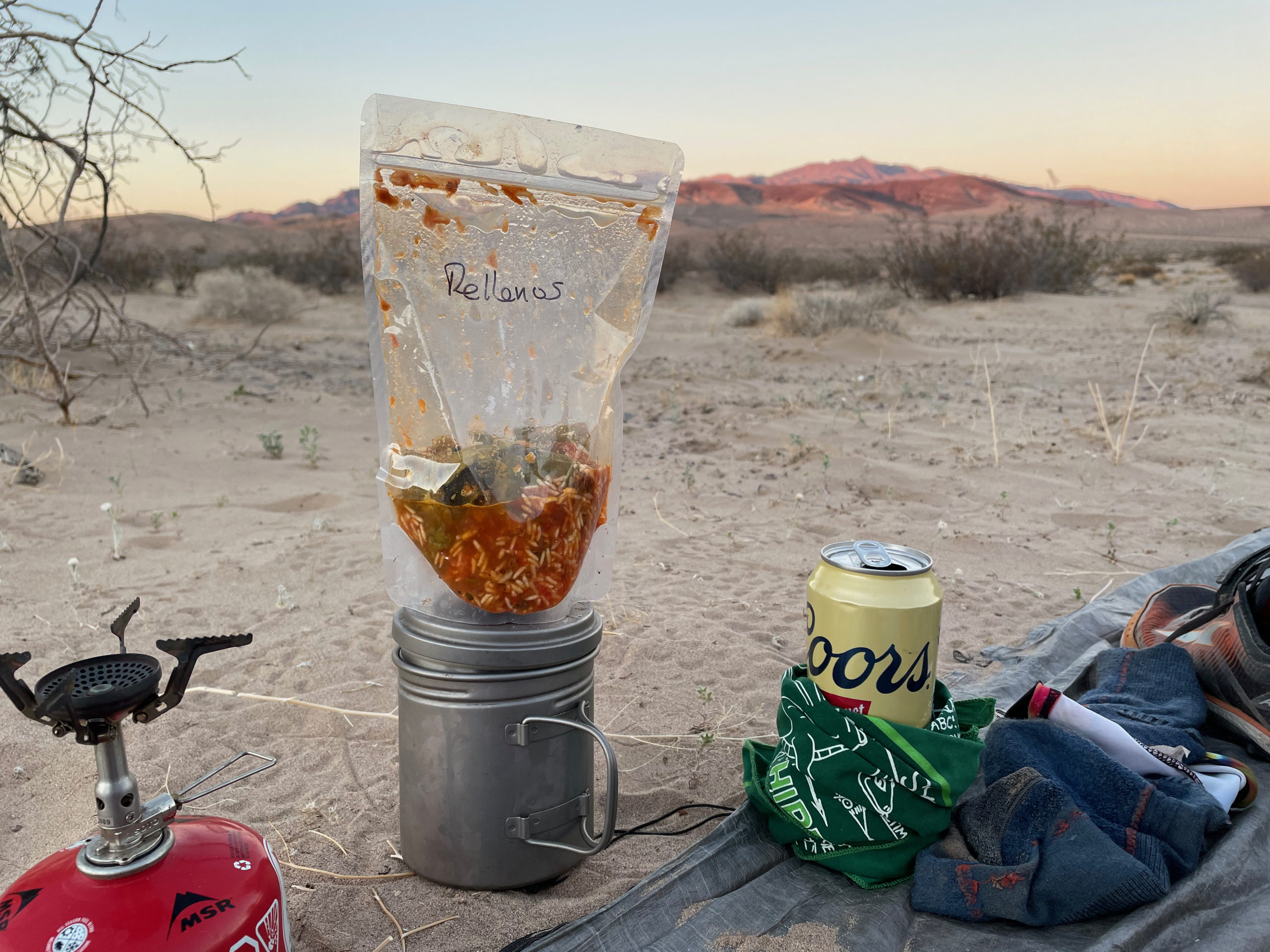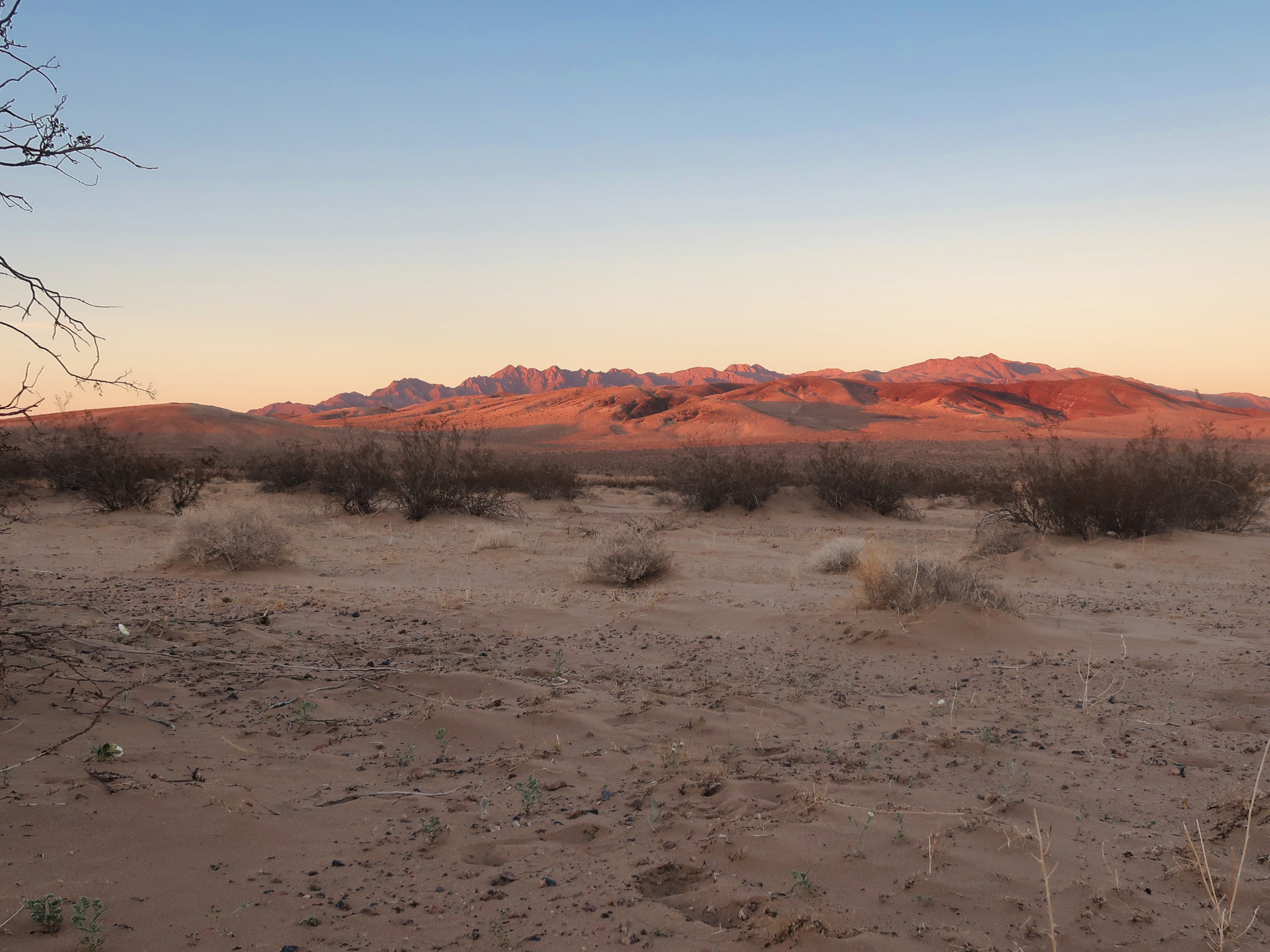It was surprisingly cold last night, although there is no good reason I should be surprised at a cold night in the desert. At any rate, I had to get up and put my bag cover on over my quilt and then put my down coat on over me.
I probably lagged in bed a bit too long because of the cold but finally got up and started striding down another wash. So far the washes have been hard packed and relatively free of catclaws. My goal is to hike the Desert Trail far enough that I hike past the northern extent of catclaw territory. These bushes have tormented me since the Mexican border and I desire to see no more of them.
In principle they are a keystone species of the Mojave. They support mistletoe parasites whose berries are an important source of nutrition for desert birds, especially the phainopeplas that I so much enjoy watching. There have been a few of these lovely birds around here, but it is hard to believe there are any berries left for them to eat. I have seen zero catclaws leafed out in the last three droughty springs. No leaves, only thorns.
My route continued descending from 3300 ft down to 1700, winding through a broad wash or perhaps valley on the west side of the Kingston Range for which this wilderness is named. The Mojave is spotted with these island wildernesses, which mostly encompass rough and impassable terrain, and thus have been set aside without much of a fight as no one wants to or is able to reach them anyway. No one except hikers curious to see just what exactly there is on those blanks spaces on the map. That probably works out to about 2 or 3 people per year.
The vegetation deteriorated as I went down toward the Valjean Valley. The Joshua Trees became deader and the creosotes browner until there was really little evidence of active plant life at all. The drought has been especially cruel here.
Picked up my first cache on Kingston Rd no problem, but could not find any shade for lunch. I squeezed in under a creosote on a wash bank and held my umbrella up to create a livable break spot. It was livable but not high living.
Kingston Spring is noted as unreliable in most accounts. Unlike Francis Spring, it supports a lush island of trees, bushes and grasses, and I had hopes of lounging in the shade by a bubbling spring. But it was dry and looked pretty salty anyway.
It got hot. When I found a shady arroyo bank at 3 I hung out under its rim until 5. But it was still beastly hot even then. The sinking sun lit me up from the side and fairly well broiled me.
Called it quits behind the Valjean Hills which are becoming more dune-like the farther I travel. I am not anxious to camp on sand dunes and eat grit all night as the wind blows.
Laid out my ground cloth once the shadows reached the sand, stripped off my clothes and drank the cached beer that I cooled off with a wet bandanna. I had chiles rellenos for supper, a dish that I freeze-dried as an experiment. In case you are wondering, beer and chiles rellenos are a delightful combination.


